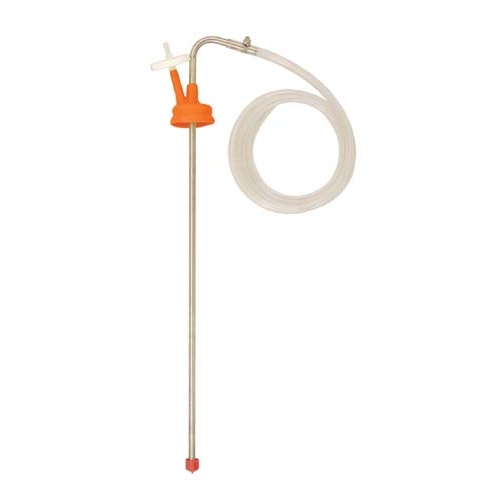I just bottled 3.5 gallons of cider that I started 3 weeks ago. (it was a 4 gallon batch, I left a quart in the fermentor to start the next batch, and spilled a quart on the floor.) I could not keep the siphon going. I was putting it up in 500ml bottles, and I could almost get one filled before the tube would fill up with outgassed CO2 and break the siphon and I would have to start over. I was ready to dump the whole batch. Finally I put a 2-hole carboy cap on the carboy, with the racking cane in the big hole and a plastic tube on the small one. The only way I could bottle it was to blow into the tube to pressurize the carboy, and even then CO2 was coming out of solution in the tube and I was getting a lot of suds in the bottles. What was supposed to be a relaxing 15 minute task was a 45 minute ordeal. If it was beer, the way I did it would have contaminated the whole batch. I think a 7% ABV cider will be okay, there's not enough nutrients left for anything but acetobacter, and there's not enough air in the bottles for that.
I guess next time I will degas the cider a week before I bottle it. Also I'll put a hose clamp on the hose where it attaches to the racking cane in case there's air leaking in at that point.
This was my first time fermenting with BV7 yeast, but I don't think that was significant.
I guess next time I will degas the cider a week before I bottle it. Also I'll put a hose clamp on the hose where it attaches to the racking cane in case there's air leaking in at that point.
This was my first time fermenting with BV7 yeast, but I don't think that was significant.



